- News
- Reviews
- Bikes
- Accessories
- Accessories - misc
- Computer mounts
- Bags
- Bar ends
- Bike bags & cases
- Bottle cages
- Bottles
- Cameras
- Car racks
- Child seats
- Computers
- Glasses
- GPS units
- Helmets
- Lights - front
- Lights - rear
- Lights - sets
- Locks
- Mirrors
- Mudguards
- Racks
- Pumps & CO2 inflators
- Puncture kits
- Reflectives
- Smart watches
- Stands and racks
- Trailers
- Clothing
- Components
- Bar tape & grips
- Bottom brackets
- Brake & gear cables
- Brake & STI levers
- Brake pads & spares
- Brakes
- Cassettes & freewheels
- Chains
- Chainsets & chainrings
- Derailleurs - front
- Derailleurs - rear
- Forks
- Gear levers & shifters
- Groupsets
- Handlebars & extensions
- Headsets
- Hubs
- Inner tubes
- Pedals
- Quick releases & skewers
- Saddles
- Seatposts
- Stems
- Wheels
- Tyres
- Health, fitness and nutrition
- Tools and workshop
- Miscellaneous
- Buyers Guides
- Features
- Forum
- Recommends
- Podcast
BUYER'S GUIDE
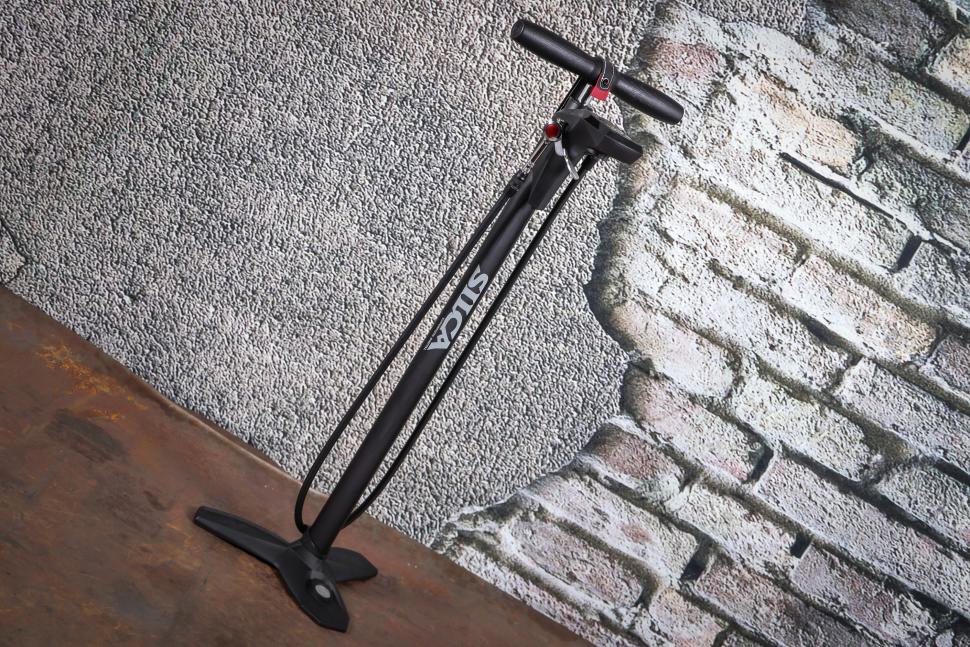 Silca Superpista digital Floor Pump-1.jpg
Silca Superpista digital Floor Pump-1.jpgBest track pumps 2023 — the easiest way to put some air in your tyres
A track pump, also called a floor pump, is designed to inflate your tyres quickly and easily. A small, lightweight pump is great for carrying when you ride, but a track pump is the best tool for the job when you're at home. We've inflated hundreds of tyres over the years to find out which track pumps do the job best. These are the best track pumps you can buy.
- Best overall: Topeak Joe Blow Sport III — Buy Now for £33.74 from Amazon | Find out more
- Best for multiple tyre sizes: Topeak JoeBlow Tubi 2Stage — Buy Now for ~£93 from Bike-Discount | Find out more
- Best for workshop football: SKS Rennkommpressor — Buy Now for £49.50 from Merlin Cycles | Find out more
- Best on a budget: Lifeline Essential — Buy Now for £9.99 from Wiggle | Find out more
- Best standalone for tubeless: Beto CJA-001S Tubeless Air Tank Inflator — Buy Now for £49.99 from Merlin Cycles | Find out more
- Best all-in-one for tubeless: Topeak Joe Blow Booster — Buy Now for £133.00 from Tweeks Cycles | Find out more
- Best portable: Cannondale Airport Carry On — Buy Now for £44.99 from Triton Cycles | Find out more
- Best "Ooh, shiny!": Birzman Maha Push and Twist II — Buy Now for £72.08 from Amazon | Find out more
- Best money-no-object: Silca Superpista Digital — Buy Now for £290 from Chain Reaction Cycles | Find out more
- Almost as good as Joe Blow Sport, but slightly cheaper: Zefal Profil Max FP60 — Buy Now for £29.99 from Merlin Cycles | Find out more
A track pump makes it easy to keep your tyres at the right pressure, keeping them performing at their best. They start at just £10, so there's no need to struggle with a hand pump every time your tyres need topping up.
Pay attention, Bond: it's easy to over-inflate a tyre by using a track pump absent-mindedly so keep an eye on the gauge.
Smaller riders should go for narrow-barrel floor pumps to get the right pressure; we've seen diminutive riders lift themselves off the floor with some fatter pump.
Looking for a portable pump? Check out our guide to frame pumps and CO2 inflators and six of the best mini-pumps.
The 10 best track pumps you can buy in 2022
Best overall: Topeak Joe Blow Sport III — Buy Now for £33.74 from Amazon
Great performance and build quality from a home workshop favourite. The construction is all-steel, with the pressed base bolted to the barrel. The Sport uses Topeak's TwinHead adapter, with Presta and Schrader valves sitting opposite each other and sharing a locking lever. It's a simple design that's simple to use. Both sides of the head accepted all the valves we tried with no leaks.
Read our review of the Topeak Joe Blow Sport III
Find a Topeak dealer
Best for multiple tyre sizes: Topeak JoeBlow Tubi 2Stage — Buy Now for ~£93 from Bike-Discount
If your fleet includes lots of different tyres sizes and tubeless systems too, this is the track pump you want. The Topeak JoeBlow Tubi 2Stage features the new TubiHead valve coupler, and it's a revelation for anyone using tubeless tyres. The two-stage chambers save time and effort when inflating tyres too.
With track pumps there's usually a compromise to be made; get something capable of getting the skinny rubber up to 160psi, and have it take forever on big tyres, or choose one that pumps large amounts of air per stroke – but struggles to reach high pressures. Topeak has overcome the whole volume vs pressure issue here by using two barrels, and adding a switch at the top of the pump.
If you're running tubeless, the TubiHead can remove valve cores while keeping air in the tyre. This is a revelation for tubeless tyre users. Removing the valve allows you to get far more air into the tyre, more quickly, and keeping the pressure up while you replace the core means the tyre stays seated. Genius!
Read the full review of the Topeak JoeBlow Tubi 2Stage floor pump
Find a Topeak dealer
Best for workshop football: SKS Rennkommpressor — Buy Now for £49.50 from Merlin Cycles
The classic pro workshop pump has its deficiencies — the gauge is relatively small and being at the bottom of the shaft is awkward to read — but it's tough as old boots, which explains its enduring popularity. The base is made from cast metal, the shaft is a hefty steel tube and the comfy handle is nicely turned from wood. The construction quality makes it highly resistant to the kind of everyday knocks and bumps that a floor pump has to endure in a pro workshop.
It's available with a selection of heads from a fits-everything 'smart' head to a simple push-on Presta-only attachment.
Best on a budget: Lifeline Essential — Buy Now for £9.99 from Wiggle
For just a tenner, this inexpensive pump from Wiggle's own-brand Lifeline is a major bargain. It has a dual-valve head that fits both presta and Schrader valves, and the gauge is at the top of the barrel so it's easy to read.
Best standalone for tubeless: Beto CJA-001S Tubeless Air Tank Inflator — Buy Now for £49.99 from Merlin Cycles
The Beto CJA-001S Tubeless Air Tank Inflator is a workshop-quality tubeless air tank with well-thought-out features and excellent performance. It should last you a lifetime of tubeless setup, road or mountain.
Read our review of the Beto CJA-001S Tubeless Air Tank Inflator
Find a Beto dealer
Best all-in-one for tubeless: Topeak Joe Blow Booster — Buy Now for £133.00 from Tweeks Cycles
Topeak's Joe Blow Booster is an easy to use, all in one solution for anyone that wants to seat tricky tubeless tyres or just inflate them, using a high-pressure reservoir to provide enough of a blast of air to get even the most stubborn rubber seated. It's expensive but it's the best all-in-one unit we've used, by some way.
If you regularly inflate tubeless tyres and need a quality track pump anyway, it makes a lot of sense to plump for this. Even if you've already got a decent track pump, the ease of use makes it highly tempting too.
Read our review of the Topeak Joe Blow Booster
Find a Topeak dealer
Best portable: Cannondale Airport Carry On — Buy Now for £44.99 from Triton Cycles
Most cyclists have a couple of pumps: a mini pump for road-side rescue and a track pump for home inflation. The cycling industry is nothing if not adept at creating niches, however, and the travelling track pump might be just such a niche - for when you're on a biking holiday or just need to cram a lot of stuff in a small car for an event. Cannondale's Airport Carry On floor pump is just such a pump, with a capacity equal to many a full-sized track pump and a clever folding design to make it more packable.
Read our review of the Cannondale Airport Carry On
Find a Cannondale dealer
Best "Ooh, shiny!" Birzman Maha Push and Twist II — Buy Now for £72.08 from Amazon
Birzman's Maha Push and Twist II Floor pump is a really high quality unit, and the new head is simple to use and effective for both Presta and Schrader valves. It's expensive, but a very nice thing and definitely worth a look if you're after a good-looking pump with performance to match.
Read our review of the Birzman Maha Push and Twist II
Find a Birzman dealer
Best money-no-object: Silca Superpista Digital — Buy Now for £290 from Chain Reaction Cycles
Silca makes super-high-quality tools and accessories, with the associated high prices. The Superpista Digital Floor Pump is the most expensive track pump we've ever tested (and probably the second most expensive track pump ever made), but it is extremely nice to use, with a solid build quality. It's highly accurate and it offers a few neat tricks up its barrel.
Still not prestigious enough for you? Check out the Silca SuperPista Ultimate Hiro Edition for a mere £430.
Read our review of the Silca Superpista Digital
Find a Silca dealer
Zefal Profil Max FP60 — Buy Now for £29.99 from Merlin Cycles
Zefal's Profil Max FP60 is a decent floor pump and doesn't cost the earth. It's pretty well-made and is a pleasure to use. It looks like it'll go the distance and if the head wears out then replacement is available. The long hose, Z-switch head, big dial and smooth pumping action make it a pleasure to use, and it gets tyres to 120psi with ease.
Read our review of the Zefal Profil Max FP60
Find a Zefal dealer
Everything you need to know about track pumps
It doesn’t need to be especially portable so, unlike most things in cycling, the weight of a track pump isn’t an issue. Instead, you want something that’s solidly built so it’ll last you years.
What features should you look for in a track pump?
Base
The base needs to be stable so wide is good. You usually put a foot on either side of the base to hold the pump steady. If you’re likely to use your pump on polished floors inside your house or flat, check for non-slip rubber contact points that won’t cause scratches.
Gauge
One of the advantages of a track pump is that you get a gauge that allows you to inflate your tyres to the correct pressure (some hand-held pumps have gauges but most don’t). Some are digital but most are dials.
The ability to set a marker to show your target pressure is handy. Some people prefer a gauge positioned at the top of the barrel rather than at the bottom for easier reading. A gauge at the top can be damaged if the pump gets knocked over so needs to be well protected. The important thing is that you can see it clearly, wherever it is.
Barrel
The barrel – the main body of the pump – can be made of various different materials. Because weight isn’t usually an issue, strong steel and aluminium are good options. The larger the barrel, the more air you can pump into your inner tubes with every stroke.
As well as getting your tyres pumped up more quickly, a large barrel will allow you to seat tyre beads in tubeless tyre systems, but beware if you're a very small rider: you might struggle to get higher pressures into your tyres with an oversized barrel.
Valve head/chuck
Most track pumps are suitable for both Presta (road type) and Schrader (car type) valves. Some have a dual head with different holes for different valves, some have a single hole that works with both, some have a chuck that you turn around according to the valve type. Sometimes you have to unscrew a cap and flip over a bung to swap between valves. That’s not a problem if you use the same type of valve all the time but it’s a bit of a pain if you use both.
If anything is going to fail on your track pump over time, it’s likely to be the valve head, so it’s a good idea to check that you can buy spares separately to save you buying a whole new pump.
Bleed valve
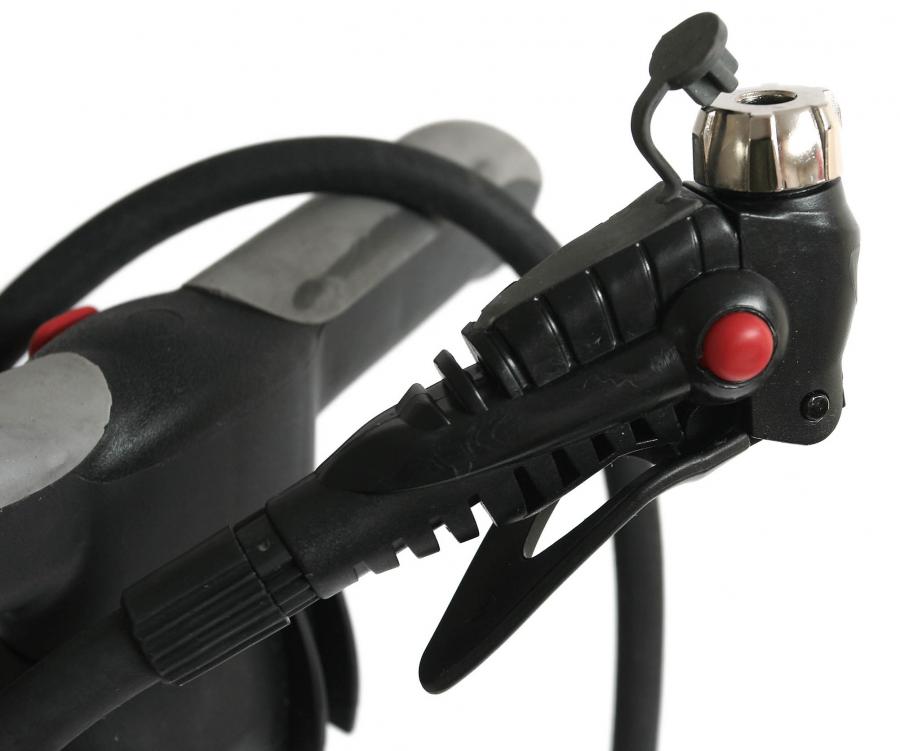
A bleed valve is a handy feature if you want to be very precise with the air pressure in your inner tubes. It allows you to let a little air out without removing the valve head from the valve.
Piston
The piston is the rod underneath the handle that forces air out of the barrel and into your tyres. Some pistons can be flexy meaning that you have to pump carefully to avoid destroying the whole pump. Go for something as sturdy as possible.
Handle
Handles come in a variety of different materials. Choose a handle that’s comfortable to use and, again, go for something sturdy that’ll stand the test of time.
Hose
A long hose – one that stretches the full length of the barrel and back again – can make life slightly easier although it’s unlikely to be a deal breaker.
Tubeless air tank
The growing popularity of tubeless tyres has led to a new pump category, with an extra chamber that provides a big burst of air to get a tubeless tyre seated. You pressurise the tank, and then release all the air into the tyre in one hit, blowing the tyre bead up on to the rim seat.
Weight and portability
The weight of your track pump probably isn’t much of an issue for you because it’s likely to live most, if not all, its life in your house or garage. You might want something relatively small and lightweight if you’re likely to take it with you when you travel to events/races, particularly if you’re flying.
Pressure
Check that the pump is capable of getting your tyres up to the pressure you need. The chances are that it will be, but bear in mind that some tubulars require very high pressures and some manufacturers exaggerate their pumps’ capabilities.
Looks
It used to be that track pumps were purely functional (or ‘boring’, depending on your point of view). Now you can get ones with polished steel or anodised aluminium barrels, wooden handles, and so on. They actually look cool.
Why pay more?
Pretty much every track pump out there will get enough air into your tyres relatively easily, so why not just buy the cheapest you can find and be done with it?
Well, pay extra and you're likely to get something made from better quality materials so it'll probably be more robust and last longer. If you only cycle rarely, that might not be much of an issue, but if you're a year-round cyclist, perhaps with several bikes to keep on the road, a better pump is more of an asset.
Plus, paying for a decent pump with a good head that locks firmly in place on the valve without leaking or working loose is definitely worth having. It makes life that little bit easier.
If you want a pump that's shiny and/or anodized with a wooden handle and a cool-looking gauge, it'll cost you more than a basic plastic pump, but you might not be interested in how the pump looks, especially if it's going to spend its whole life in the shed or garage.
Explore the complete archive of reviews of pumps and on road.cc
About road.cc Buyer's Guides
The aim of road.cc buyer's guides is to give you the most, authoritative, objective and up-to-date buying advice. We continuously update and republish our guides, checking prices, availability and looking for the best deals.
Our guides include links to websites where you can buy the featured products. Like most sites we make a small amount of money if you buy something after clicking on one of those links. We want you to be happy with what you buy, so we only include a product if we think it's one of the best of its kind.
As far as possible that means recommending equipment that we have actually reviewed, but we also include products that are popular, highly-regarded benchmarks in their categories.
Here's some more information on how road.cc makes money.
You can also find further guides on our sister sites off.road.cc and ebiketips.
road.cc buyer's guides are maintained by the road.cc tech team. Email us with comments, corrections or queries.
John has been writing about bikes and cycling for over 30 years since discovering that people were mug enough to pay him for it rather than expecting him to do an honest day's work.
He was heavily involved in the mountain bike boom of the late 1980s as a racer, team manager and race promoter, and that led to writing for Mountain Biking UK magazine shortly after its inception. He got the gig by phoning up the editor and telling him the magazine was rubbish and he could do better. Rather than telling him to get lost, MBUK editor Tym Manley called John’s bluff and the rest is history.
Since then he has worked on MTB Pro magazine and was editor of Maximum Mountain Bike and Australian Mountain Bike magazines, before switching to the web in 2000 to work for CyclingNews.com. Along with road.cc founder Tony Farrelly, John was on the launch team for BikeRadar.com and subsequently became editor in chief of Future Publishing’s group of cycling magazines and websites, including Cycling Plus, MBUK, What Mountain Bike and Procycling.
John has also written for Cyclist magazine, edited the BikeMagic website and was founding editor of TotalWomensCycling.com before handing over to someone far more representative of the site's main audience.
He joined road.cc in 2013. He lives in Cambridge where the lack of hills is more than made up for by the headwinds.
Latest Comments
- dubwise 9 sec ago
Um, did the European Championships actually happen? Can't see any report on road.cc
- Hirsute 13 min 33 sec ago
Far too many in that article unable to reverse onto the driveway. Does no one know the highway code ?
- Car Delenda Est 1 hour 4 min ago
A more appropriate punishment:...
- Rendel Harris 1 hour 8 min ago
By no means claiming that Armstrong was the only doper in that period but your claim makes no sense: the average speed is taken on the time of the...
- Russell Gray 1 hour 26 min ago
Close passing and rank bad driving have almost become the norm, to the point where I expect it and it doesn't shock me. What does shock me are the...
- kingleo 1 hour 32 min ago
So why did they not make the bridge wider, one side for cyclists and the other for pedestrians with a partition in between?
- wtjs 1 hour 37 min ago
I suffered a close pass by a BMW driver 2 or 3 years ago. 10 yards later he was stopped by temporary lights. It's all on video: there's no swearing...
- ManicDrummer 2 hours 27 min ago
Electromagnetic pedals you say? Call the witch finder general!
- slc 2 hours 44 min ago
I lived in Swansea before and after the new tracks were installed, and cycled along the Mayals Rd a couple of times each week. I'm sorry to say...
- OldRidgeback 2 hours 44 min ago
Ok, so now the trial has proven successful and useful it should be introduced on a compulsory basis for all driving instructors surely?


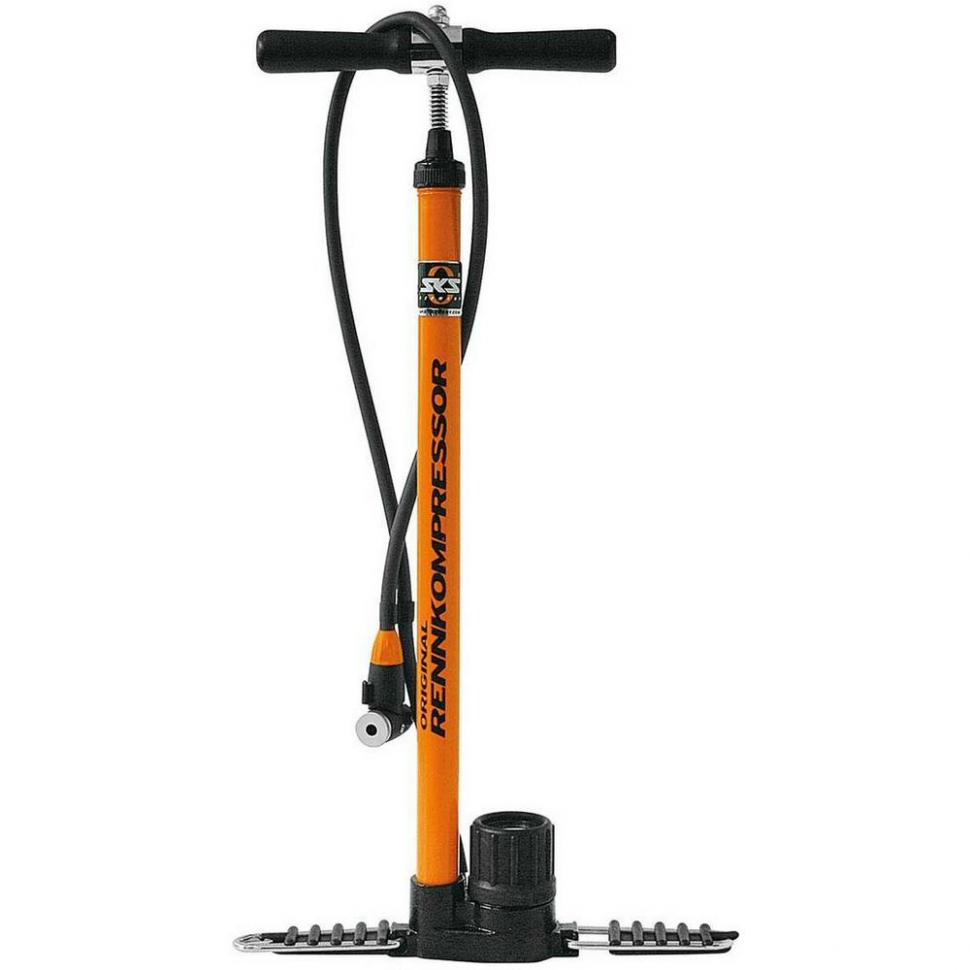

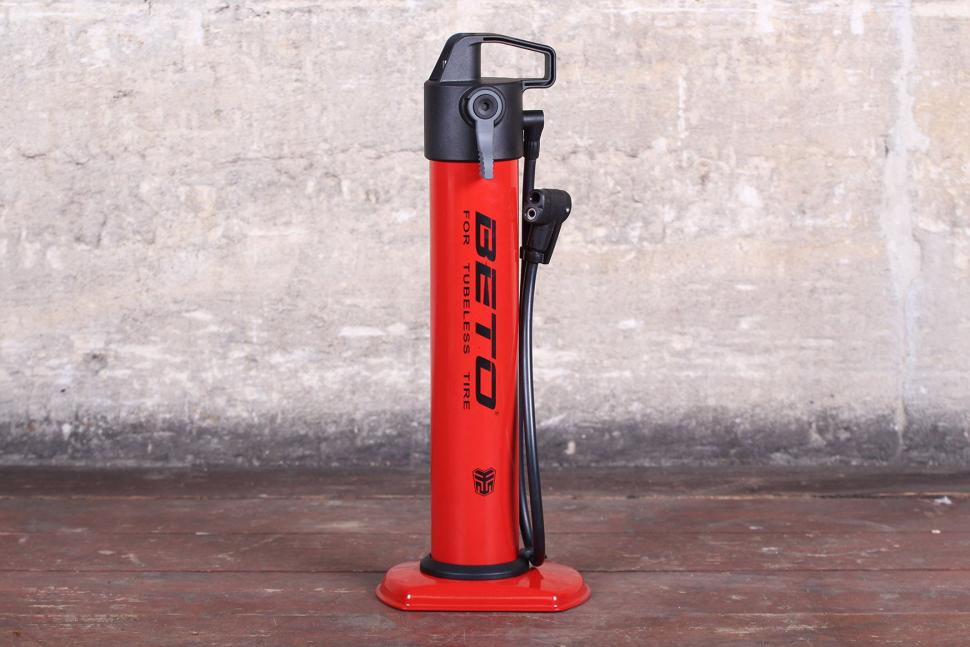

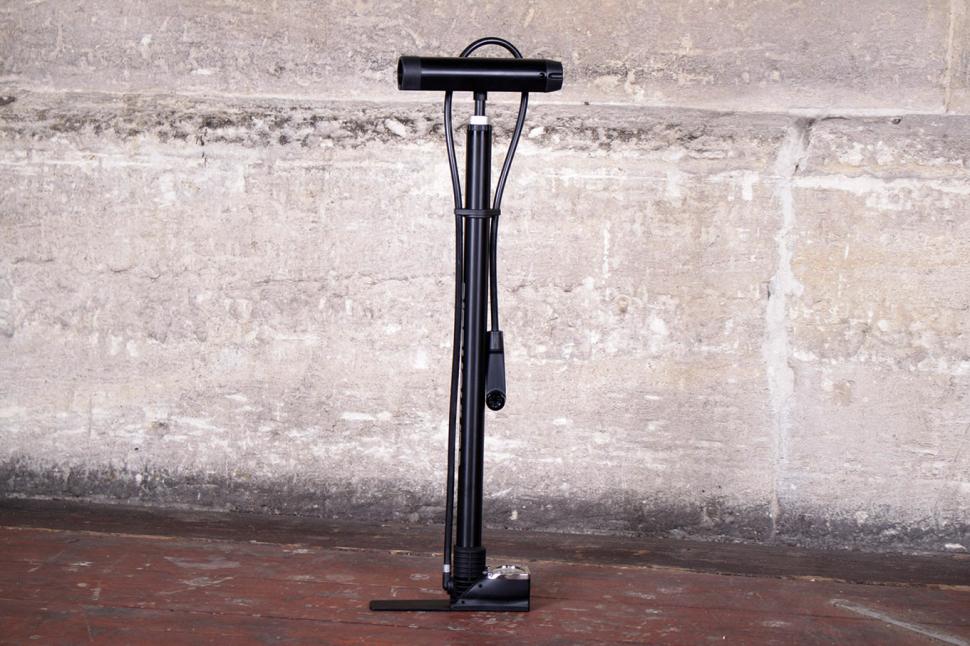
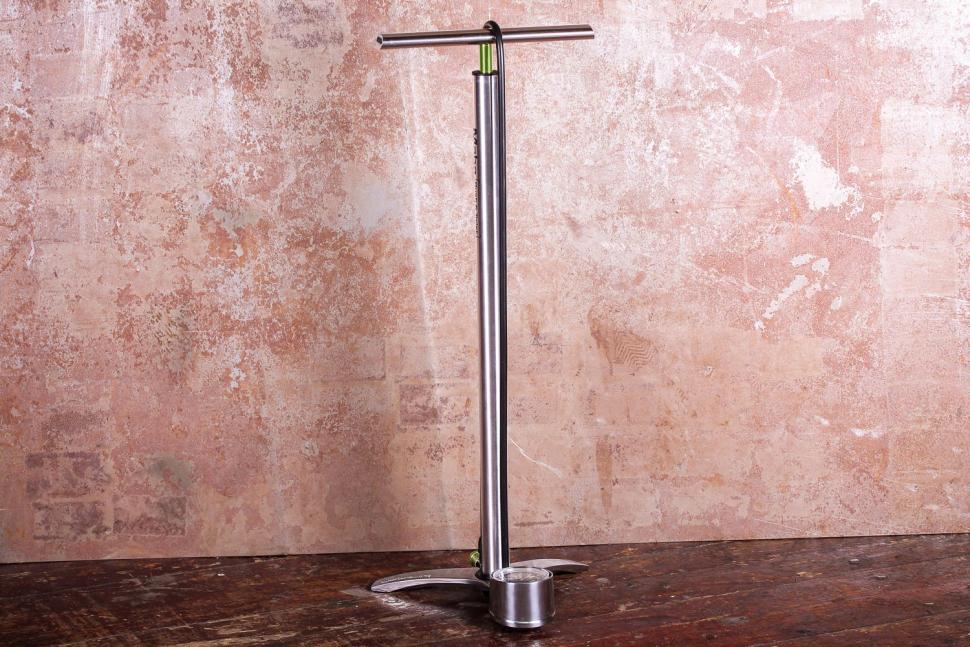

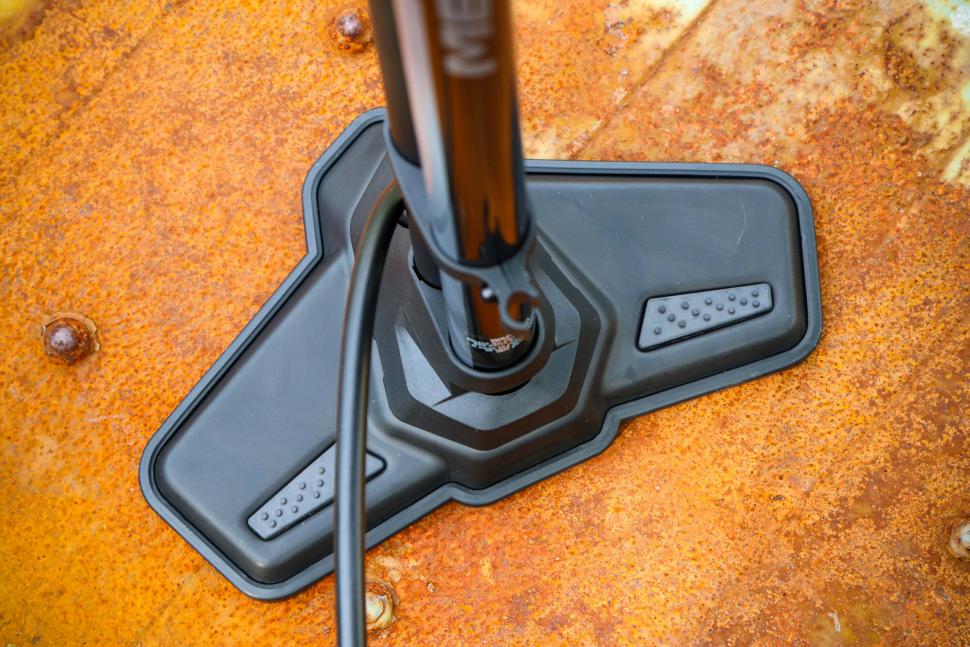

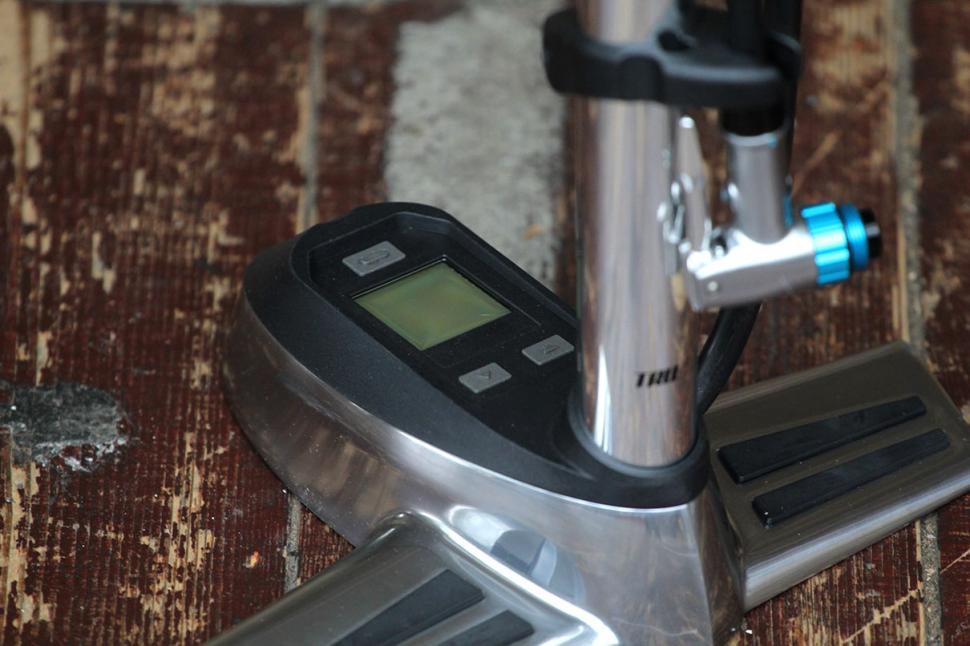
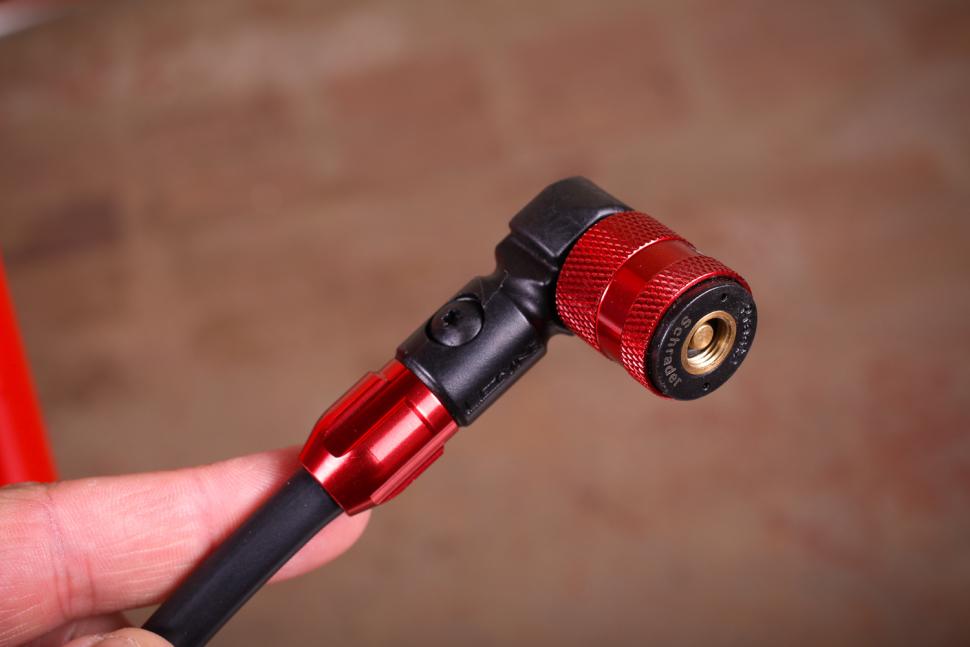
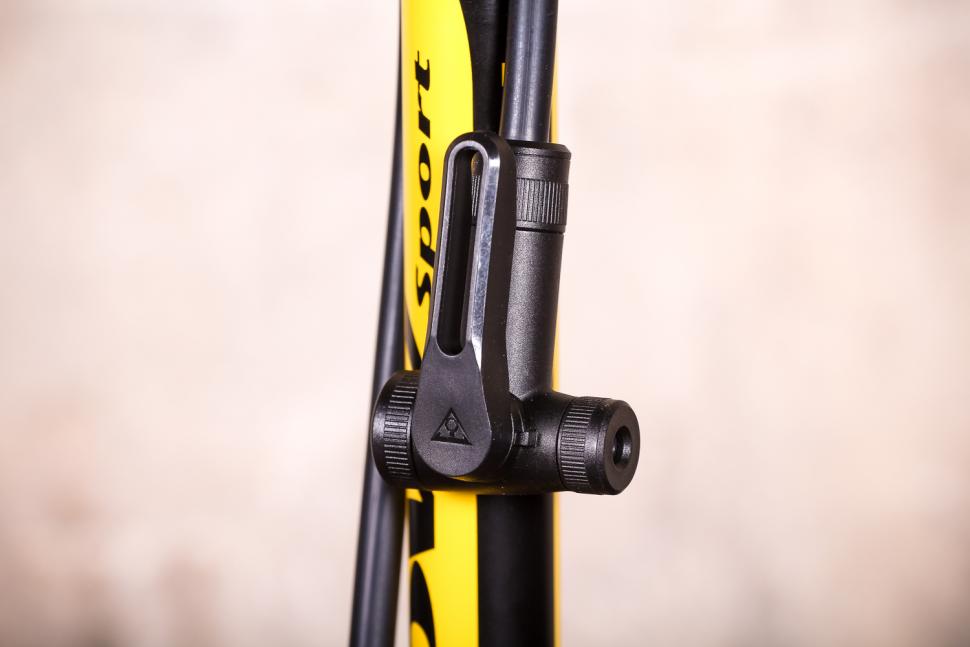

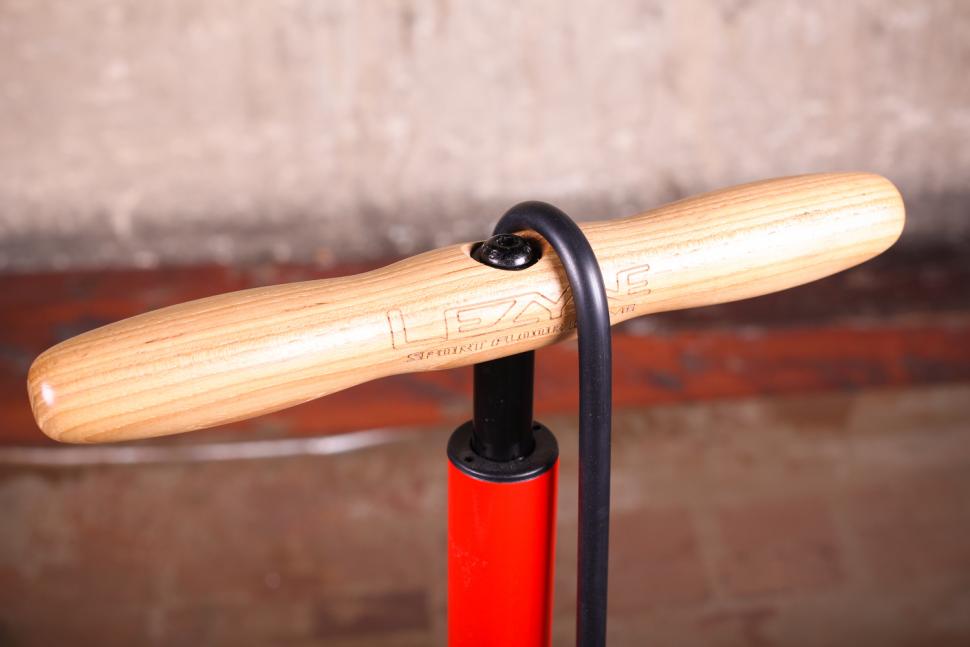
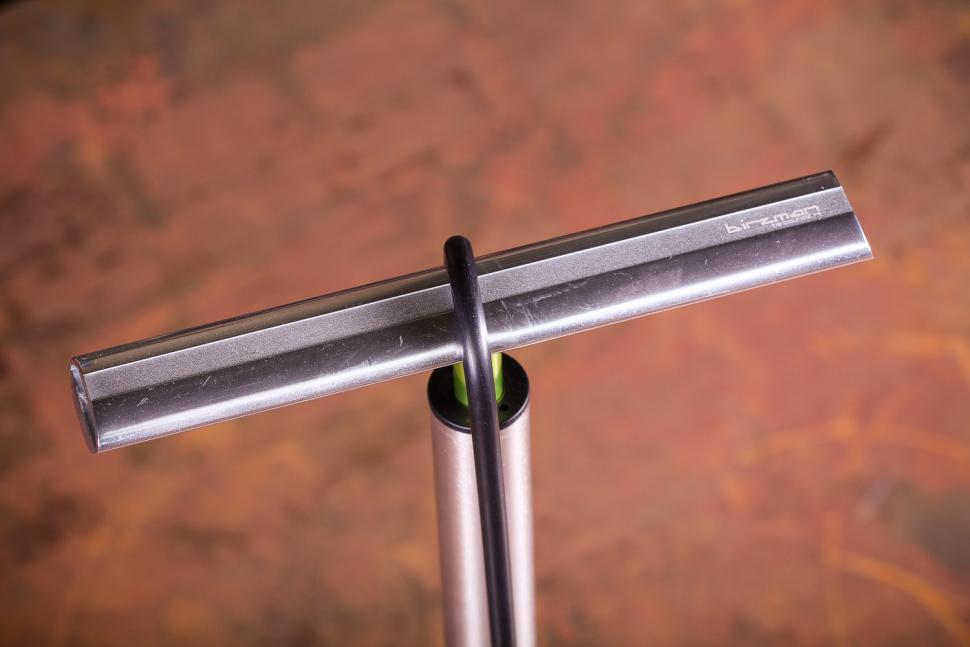
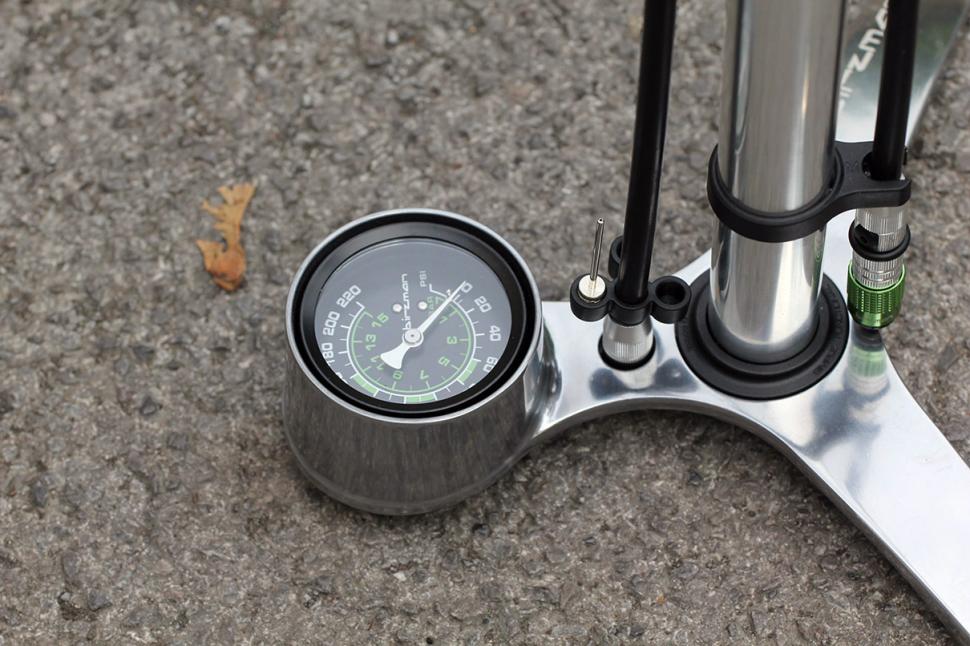
Add new comment
39 comments
I don't understand the love for the Joe Blow. I had one for a couple of years (before it gave up the ghost) and found it to be unstable and just not that nice to use.
It was replaced with a Lezyne which is much better.
Have had mine for must be getting on for 20 years. The only issue is that if the pipe dresses to teh right it leaks slightly, (and the moral is?)
But overall it works like new, in spite of being left out in teh rain once and filling with water
Aldi track pump and a Topeak digital gauge I got on sale from Halfords
The gauge on the Aldi is inaccurate but consistent so I know if I pump up to 100 psi on it then when I check it with my digital gauge then I'll need to let 2 or 3 psi out to reach my favoured 80psi.
One of the things that strikes me about user reviews is that very few people comment on how heavy handed or rough they are on stuff. I know some people who'll unintentionally destroy the same tools I've been using for years.
Because I once forgot to take my Lezyne floor pump on holiday, I've been running that and a Zefal for about a decade. They're used daily and both still work, but I've always been irritated by the on-off the valve experience with both (one screw-on, the other has a lever) which has always been fiddly and lead to leakage.
In short I'm happy with neither and haven't been for a long time; wouldn't recommend either, but refuse to chuck them out whilst they're still servicable.... Staring accusingly at the Zefal now as I prepare for my morning ride!
If you want a pump that is super stable while in use, I can recommend the Beto tripod track pump. I've had one for around 5 years now and it's still pretty much perfect.
On the 'breaking the valve seal' thing, I always give the valve a blip with my finger to release a bit of pressure prior to putting the pump valve head on.
yup, plus one for the decathlon which once again typifies the profligatory capricous nature of most cyclists.
We've used a B'twin 900 track pump for 5 years solid in the workshop....day in and day out... it does the job , never fails.... best £20 we ever spent.... our one is black coloured but yellow which they have now would be nice.... here's to more years of solid service...
My Beto Tank Inflator failed after 14 months. Just out of the warranty period — Great (!)
I've replaced it with a Stanley compressor. Couldn't be happier.
I constantly see articles about track pumps but when is someone going to do a test on the accuracy of the actual gauges. Most track pumps sold use cheap Chinese made gauges that are up to 20% out of tolerance. It seems totally pointless making an article like this without providing an accuracy figure!!!
I don't think accuracy is an issue for any pump brands. Gauges are sourced from the same suppliers who make gauges for diving gears etc...
Simiarly, we don't need to worry about the accuracy of the speedometer when buying a new car.
I bought a Birzman a few months ago and love it. Does the job well and looks great.
The push and twist mechanism is flawed and should be avoided. Works well for about 12 months and then the *very tiny* parts inside the head unit wear out and it becomes unusable. Just had my 2nd warranty head fail, back onto the joeblow
I recently bought a new Blackburn pump. I love the huge dial but the head was utter rubbish. I replaced it with a Hirame head from Track Supermarket in Japan and it's bloomin' awesome!
I searched around for pumps and bought a Silca Super Pista Pump in Yellow. All the parts can be replaced and I have owned it for a few years now. The only delay is it is a screw on head. This takes a few seconds to wind on but is fine for me. Great pump, once you have your model of choice great if you can look after it and maintain it, replace parts if needed.
Vinnychoff
Lezyne Steel Floor Drive for me. It uses the flip head chuck mentioned in the article and has an analogue gauge. I've been thoroughly impressed by it over the last 8 years or so of faultless inflation.
Zefal Husky — mine is 20+ years old and still going.
My Joe Blow Deluxe is almmost 20 years old. On to the second smarthead valve, and an occasional strip, clean and squirt with WD40.
Hi!
I want to change my tyres to the tubless ones on my CX bike, but I don't have any experience with tubless tyres.
Is it requires a special pump like the last one in the list? Or it is possible to inflate my tyres with the JoeBlow (or something similar)?
I think a lot of people use a co2 cannister if they don't have a suitable pump. That's just to get it on and make the 'pop'. You can use a normal pump after that
You can, but some sealant reacts with CO2.
Have had a Topeak Joe Blow Sprint for the better part of 15 years and it's been brilliant.
The only time it stopped working was due to a worn O-ring in the barrel - easily replaced and worked perfectly again.
SkS Rennkompressor, in my case with a Hirame head. As used by pro mechanics (for decades). You can't go wrong - it doesn't!
I bought one of these to replace my previous trackpump, which only lasted 17 years. This one should see me out. Whoever finds my rotting corpse can keep the pump as an, ahem, 'air loom'.
Quoted for truth
As tyre pressure is supposedly so important why have I never seen a pump review that measures accuracy??
Road.cc you're missing a trick here...
Exactly what I was going to say. Pump accuracy varies hugely across manufacturers. To do this review properly, you should have had a sample of say five of each pump and tested the pressure with a calibrated guage in-line to check the accuracy. If you're not going to do it properly, why bother? Have a look at DC Rainmaker tech reviews and take a leaf out of his book for thoroughness, it can only serve you well.
Since not one single brand makes or design their gauges, they are sourced from a pool of gauge makers and its basic function is to be accurate.
Another satisfied Topeak Joe Blow Sport II owner here. I must of bought it at least 5 years ago and it still works as if I bought it just yesterday.
After 3 track pumps that (1) worked briefly, then wouldn't hold the stem, (2) could never clasp a valve extender and (3) just broke, mine's a Spesh Airtool 252HP
https://bikemagic.com/accessories/specialized-air-tool-hp-floor-pump.html
The trick was to ask the LBS mechanics what they used, and buy that.
In my experience, a solid, reliable gimmick-free valve fitting is key ...
Thanks guys, the idea of having to overcome the existing pressure in the tyre is obvious but it's weird I have to pump until it's gone way past the 160psi point to the end stop before popping the valve. I may spray a touch of silicone spray into the cores to lube them and prevent sticking.
Pages